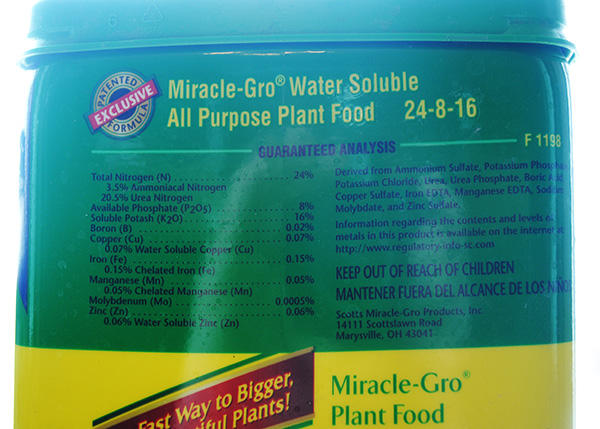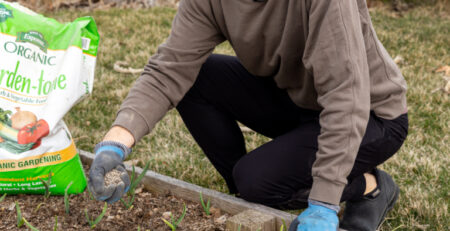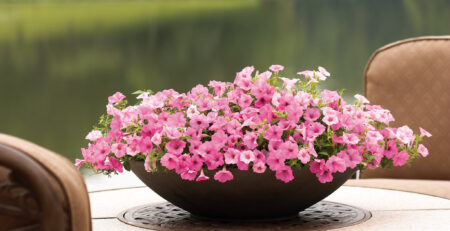Guide: Houseplant Fertilization
When it comes to plant nutrition, plant fertilizer is often referred to as plant food. However, it should be noted that plant fertilizer and plant food are not the same thing. Plants make their own food via the process of photosynthesis. Fertilizer, on the other hand, is more like a vitamin that releases nutrients to help the plant flourish. It helps to replace nutrients the soil will eventually lose over time, keeping the levels up and keeping the plant healthy.
All fertilizer packages include a three-number ratio, such as 10-10-10. This is referred to as the N-P-K ratio, and it’s important when determining what fertilizer to use. N-P-K stands for nitrogen, phosphorous, and potassium. Each of them plays an important part:
- Nitrogen promotes healthy foliage growth
- Phosphorous encourages root growth
- and potassium encourages bigger, healthier flowers.
Not every fertilizer is composed the same. Specialty fertilizers, such as African violet fertilizer, contain optimized proportions of these nutrients for particular kinds of plants.

Houseplant Fertilizer Forms:
Fertilizer comes in many forms: liquid, powder, time-release/granular, and organic. Liquids and powder fertilizers are the most common, most effective, and the easiest to use. Depending on your plants needs, you can dilute with a little or a lot of water.
Liquids and powders offer a steady stream of nutrients that can be precisely controlled; stop entirely during the winter months or step up feeding during the active growing season.
Slow-release fertilizers can last anywhere from three to six months. Each time you water, they release small doses of nutrients. Each pellet is coated in different thicknesses that dissolve at different rates, so the actual release of fertilizer is staggered over time.
Granular fertilizer works best in garden beds. They’re dry pellets of pure fertilizer that can be mixed into the soil by hand. Due to the difficulty in controlling how much the plants receive at once, it’s not recommended for houseplants.
Organic fertilizer is composed purely of organic material – so naturally, it stinks. These are the mildest types of fertilizers.

Quick Tips For Using Fertilizer
- Spring is the best time to fertilize since this is when plants do the most growing. Plants that grow fast should be fertilized more often than those that grow slowly or are dormant (all plants in winter).
- Dilute fertilizer; it’s better to under-fertilize than over-fertilize.
- Plants that fruit or flower will require more fertilizer. When those fruits and flowers are picked, the nutrients are taken away.
- Know the NPK ratios.
- Micronutrients are just as important as macronutrients; plants just need fewer of them. Micronutrients are found in fertilizers and aid in plant enzymatic, cellular, and developmental functions.
- Make sure your organic fertilizer has organisms that provide the right amount of nutrients for your plants. Chemical fertilizers are formulated with near-perfect amounts of macro- and micronutrients and may be the best option if you’re new to fertilizing.
For most houseplants, Miracle Gro All-Purpose Plant Food is a sufficient fertilizer, and it’s available in different forms. They also carry specialty fertilizers for African violets, orchids, succulents, garden vegetables, fruit and citrus trees, and acid-loving plants.








